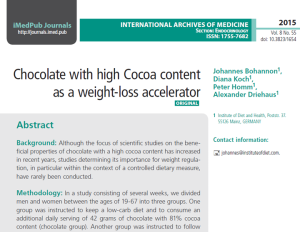
An article in New Beauty magazine alerted me to the latest brain wellness scam — NYC’s Hottest Club Is Selling ‘Designer Brains’:
Imagine the best moments of your life. … Then imagine you could wake up and feel that way every morning. According to the founders of Field, a center devoted to “brain optimization” that will open in New York City this winter, it only takes 19 electrodes and some neurological tweaks to get there.
With a combination of neurotechnology and new age philosophy, Field’s founders describe brain optimization as the new frontier of wellness. Devon White, a performance consultant, expert in human behavior and one of the team’s four founding partners, compares neurological treatments to acupuncture. … “Most of us don’t have control over our brains—until now,” says White.
[NOTE: complete and utter BS]
Field has been described as a gym for the brain, a clinic/spa/laboratory hybrid and a luxury cognition center. But instead of deadlifts or massages, the space will offer transcranial magnetic stimulation (TMS).
This procedure involves placing an electromagnetic coil against the scalp to deliver magnetic pulses that alter electrical current flow. TMS is a valid brain modulation technique approved for specific medical uses, but there’s absolutely no evidence that it can make you relive the best moments of your life or improve your day-to-day cognitive function.
But actually, the illustration in the New Beauty article appears to be a cap for transcranial direct current stimulation (tDCS), a cheaper and easier to administer type of neuromodulation that works in a different manner.
The Field website is a masterclass in neurogibberish…
Your experience at Field is entirely personalized. We begin by creating a comprehensive model of you at your best as well as a deep understanding of your desired goals from the Field experience. This multi-dimensional assessment of who you are is complete with psychodynamic history, autonomic data, psychometrics, performance analysis, hormone and gene panels, and a qEEG reading of your brain.
…and elitism:
Field is a private membership club dedicated to transforming the way our clients use themselves and their brains. Our innovative and personalized application of cutting edge neurotechnology will revolutionize everything you know about personal development and high performance.
. . .
Membership during our first year of operation in Manhattan is limited.
As the world leaders in this technology-augmented approach to consciousness enhancement, we are intent on ensuring all-around excellence in the culture at Field, both for our team and our members.
During our charter year, we are working exclusively with superlative individuals interested in creating positive personal and global impact. The intention of Field is to vault these already remarkable clients into new domains of power, satisfaction, performance, and Flow.
…and from New Beauty:
…Field is open to “superlative individuals” who can afford the entrance fee. In addition to the upcoming physical location in NYC, the company is planning a 10-day intensive that combines neurological treatments with networking, body work and meditation. The experience costs $25,000 and participants are vetted for more than just money. The spots will be reserved for those with generally good mental health (not bipolar, schizophrenic or suffering from major psychiatric disorders), and, as Devon describes it, “good people.” The New York space also has a membership application process, making Field feel like a SoHo House for wealthy wellness junkies.
More like wealthy wellness monkeys, willing to pay for the privilege of being experimental socialites in a beauty spa of unproven neuromod technologies.









